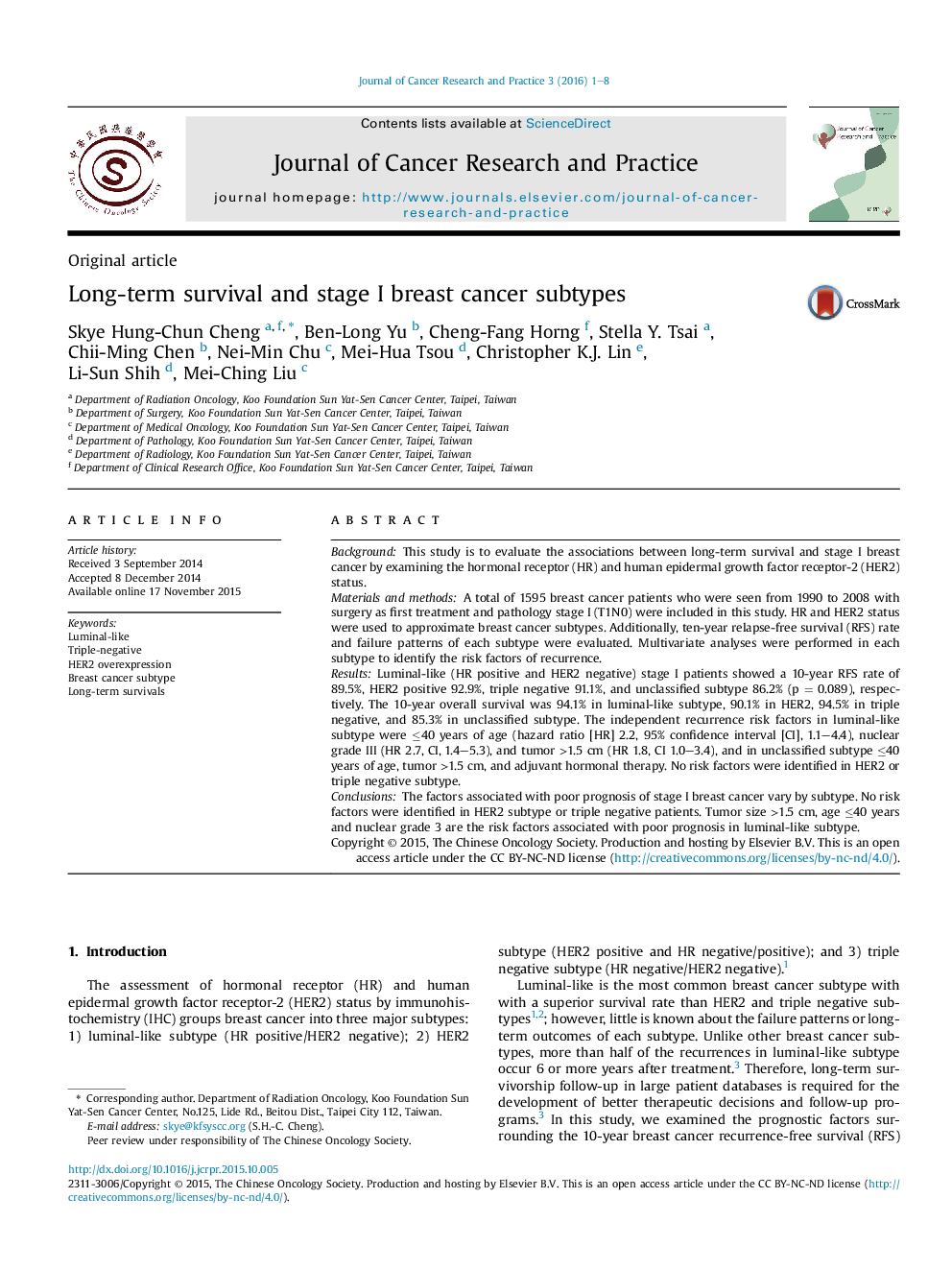| Article ID | Journal | Published Year | Pages | File Type |
|---|---|---|---|---|
| 3988776 | Journal of Cancer Research and Practice | 2016 | 8 Pages |
BackgroundThis study is to evaluate the associations between long-term survival and stage I breast cancer by examining the hormonal receptor (HR) and human epidermal growth factor receptor-2 (HER2) status.Materials and methodsA total of 1595 breast cancer patients who were seen from 1990 to 2008 with surgery as first treatment and pathology stage I (T1N0) were included in this study. HR and HER2 status were used to approximate breast cancer subtypes. Additionally, ten-year relapse-free survival (RFS) rate and failure patterns of each subtype were evaluated. Multivariate analyses were performed in each subtype to identify the risk factors of recurrence.ResultsLuminal-like (HR positive and HER2 negative) stage I patients showed a 10-year RFS rate of 89.5%, HER2 positive 92.9%, triple negative 91.1%, and unclassified subtype 86.2% (p = 0.089), respectively. The 10-year overall survival was 94.1% in luminal-like subtype, 90.1% in HER2, 94.5% in triple negative, and 85.3% in unclassified subtype. The independent recurrence risk factors in luminal-like subtype were ≤40 years of age (hazard ratio [HR] 2.2, 95% confidence interval [CI], 1.1–4.4), nuclear grade III (HR 2.7, CI, 1.4–5.3), and tumor >1.5 cm (HR 1.8, CI 1.0–3.4), and in unclassified subtype ≤40 years of age, tumor >1.5 cm, and adjuvant hormonal therapy. No risk factors were identified in HER2 or triple negative subtype.ConclusionsThe factors associated with poor prognosis of stage I breast cancer vary by subtype. No risk factors were identified in HER2 subtype or triple negative patients. Tumor size >1.5 cm, age ≤40 years and nuclear grade 3 are the risk factors associated with poor prognosis in luminal-like subtype.
